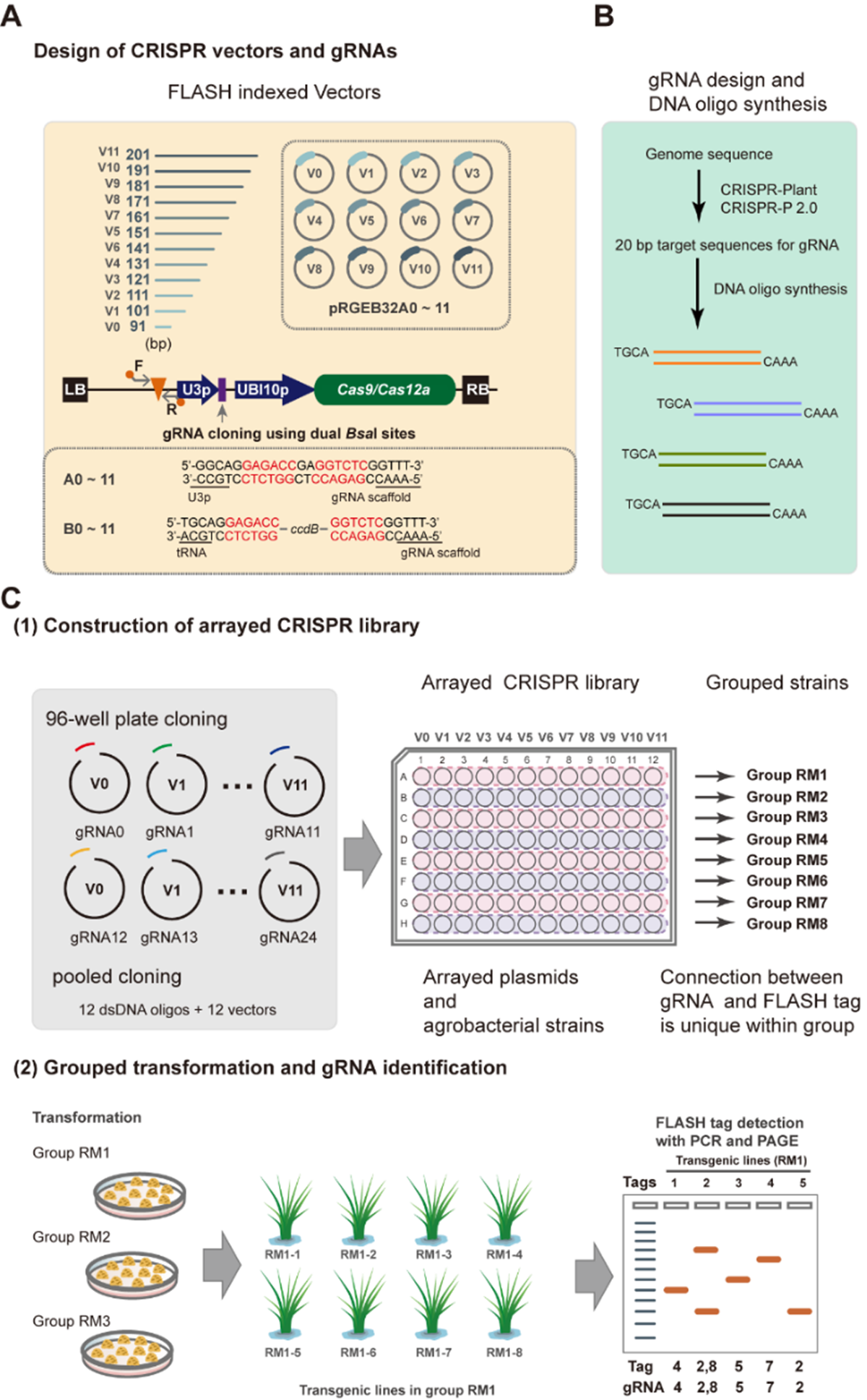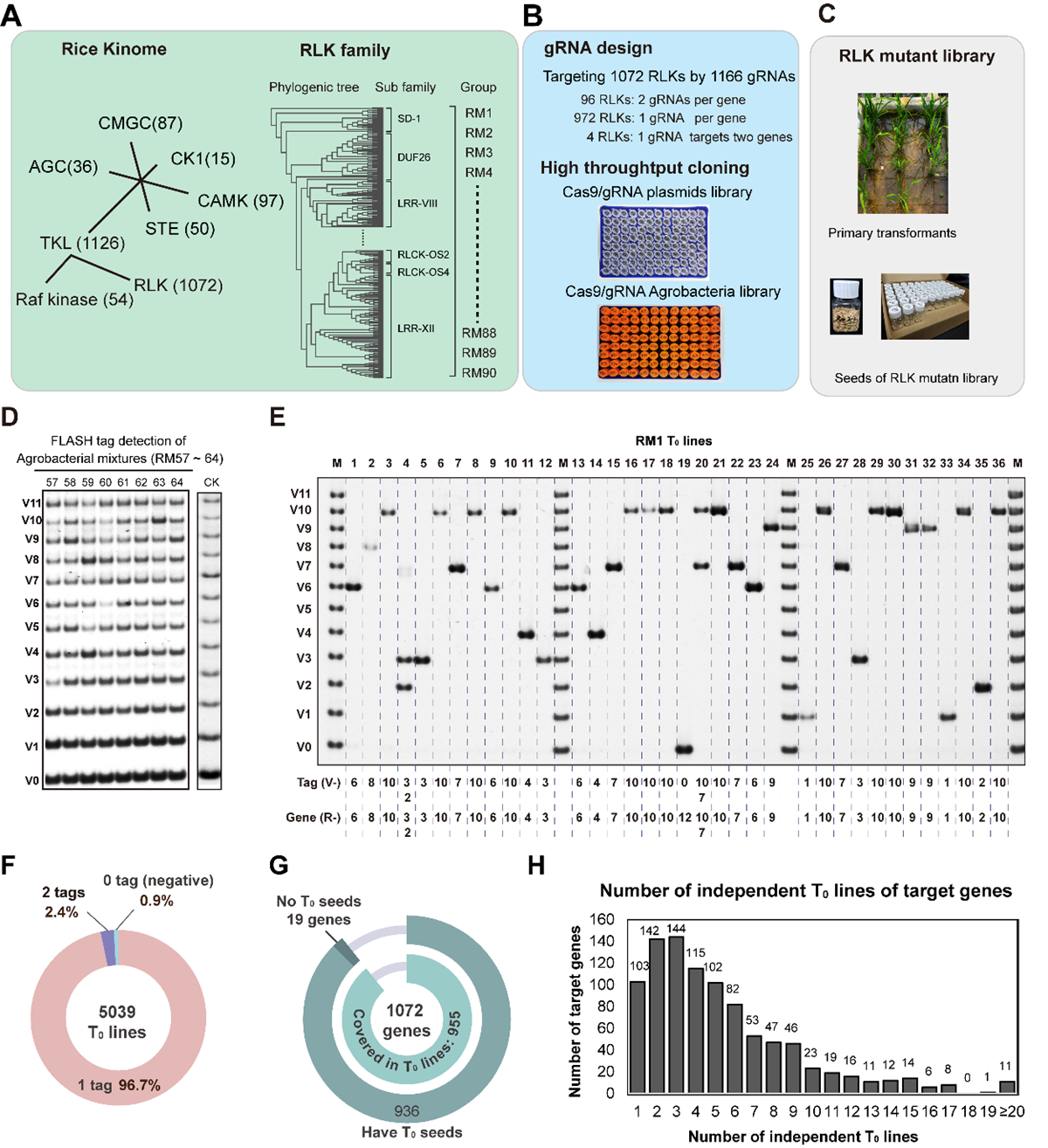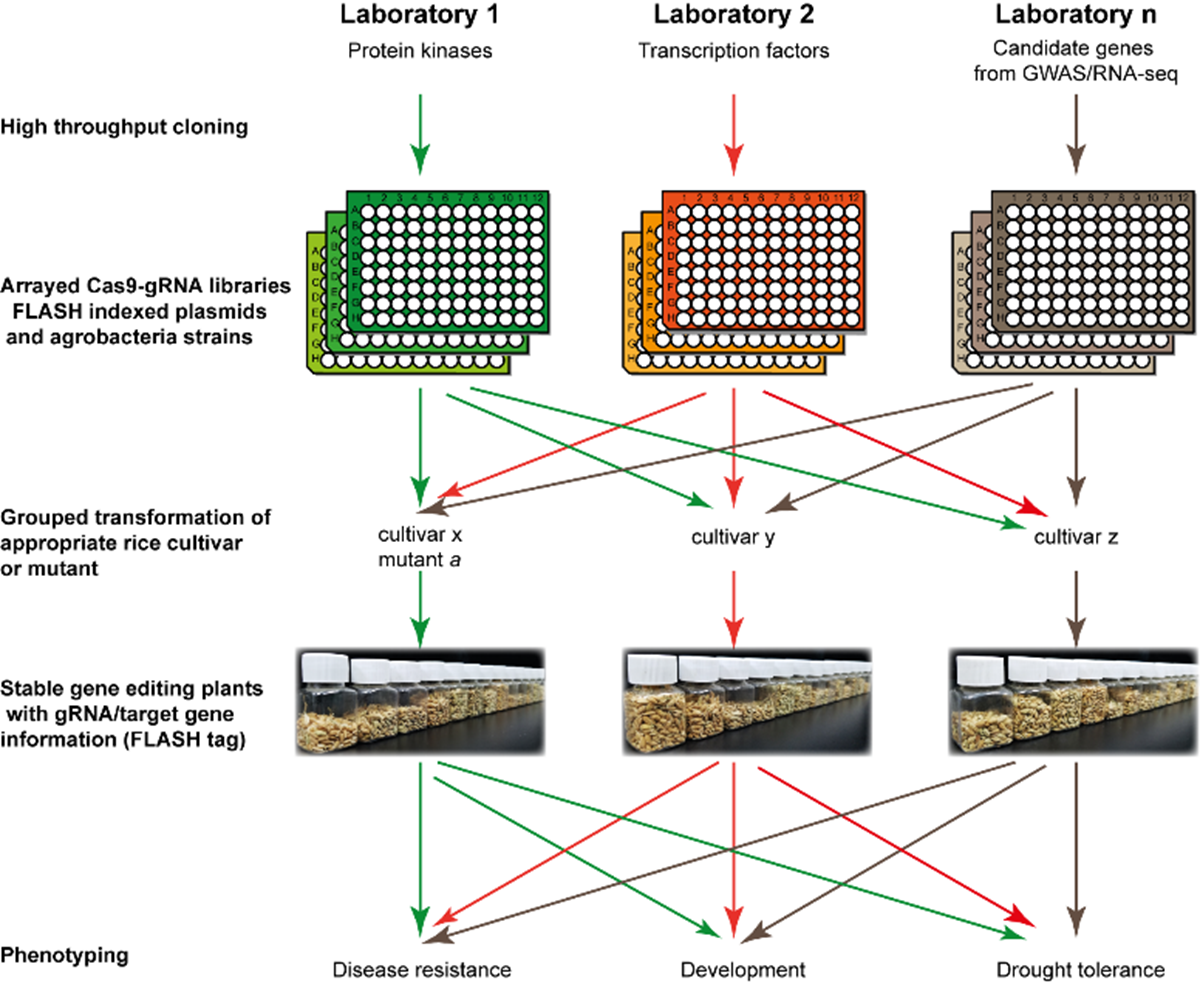南湖新闻网讯(通讯员 李淑敏)近日,我校作物遗传改良国家重点实验室谢卡斌课题组建立了一种阵列式CRISPR文库用于大规模植物基因编辑的方法。利用此方法,该课题组创建了靶向敲除1072个水稻类受体激酶的基因编辑材料,为快速鉴定抗病、抗逆相关的基因提供了新资源。基于此,该团队以“A FLASH pipeline for arrayed CRISPR library construction and the gene function discovery of rice receptor-like kinases”为题在Molecular Plant期刊上在线发表了研究论文。
随着CRISPR/Cas9基因编辑技术在植物中的日益成熟,利用CRISPR文库进行高通量的遗传筛选成为可能。目前有两种 CRISPR 文库构建策略:混合型文库(pooled library)和阵列式文库(arrayed library)。其中,混合型的CRISPR/Cas9文库已被多个实验室用于水稻、玉米、番茄等作物的突变体库的构建,但目前尚未有阵列式CRISPR文库在植物中应用的报道。
本研究建立了一种阵列式CRISPR库的快速构建技术,可同时用于小规模和大规模植物基因编辑材料的创制。作者设计了一种PCR片段长度作为Cas9/gRNA载体标签的策略(PCR fragment-length markers for gRNAs distinguishing,简称FLASH标签),可以通过常规PCR和凝胶电泳读取每个载体和转化植株的gRNA信息(即靶基因信息)。本研究中,课题组设计了12个含不同FLASH标签的CRISPR/Cas载体,并与96孔板高通量克隆技术结合,建立了快速构建Cas9/gRNA质粒文库的方法。本研究还设计了将含不同FLASH标签的12个质粒载体混合后转化水稻的策略,通过PCR检测转化植株所含FLASH标签的片段大小即可读取gRNA信息,极大地简化了基因编辑材料的创制过程。

利用FLASH 标签的载体系统构建植物突变体库的流程
利用FLASH策略,本研究在一年左右的时间内完成了靶向编辑1072个水稻类受体激酶的构建工作。课题组以12个载体混合转化水稻的方式,通过89个水稻转化事件获得了5039棵T0代水稻植株;通过PCR检测FLASH标签的方式读取了每株植物的gRNA信息,成功获得了955个RLK基因的编辑水稻。对部分材料的基因型鉴定结果表明,目标基因的编辑效率在90%以上。

靶向编辑水稻RLK基因家族
本研究对脱靶编辑、无T-DNA整合的基因编辑事件也进行了详细分析,并对15个基因的材料进行了稻瘟病接种试验,鉴定到了9个抗稻瘟病相关的基因。最后,课题组讨论了该方法的优缺点,并提出了构建全基因组规模的阵列式CRISPR文库的协作方案。

利用 FLASH 基因编辑流水线扩大阵列式 CRISPR 文库的协作方案
我校2021届博士毕业生陈凯园为论文第一作者,谢卡斌教授为通讯作者;武汉大学侯昕教授、宾夕法尼亚州立大学Yang Yinong教授和我校熊立仲教授也参与了研究。该研究得到了国家自然科学基金、科技部转基因重大专项、华中农业大学自主创新基金等项目的资助。
【英文摘要】
Clustered regularly interspaced short palindromic repeats (CRISPR)−CRISPR-associated protein 9 (Cas9)-mediated gene editing is revolutionizing plant research and crop breeding. Here, we present an effective and streamlined pipeline for arrayed CRISPR library construction that is suitable for small- to large-scale genome editing in plants. This pipeline introduces artificial PCR fragment-length markers for guide RNAs (gRNAs) distinguishing (FLASH), and a group of 12 constructs harboring different FLASH tags are co-transformed into plants each time. Therefore, the identities of gRNAs in Agrobacterium mixtures and transgenic plants can be read out through detecting the FLASH tags which only requires conventional PCR and gel electrophoresis rather than sequencing. We generated an arrayed CRISPR library targeting all 1,072 members of receptor-like kinases (RLKs) family of rice. One-shot transformation generated a mutant population covering gRNAs targeting 955 RLKs, and 74.3% (710/955) of target genes had 3 or more independent T0 lines. Our results indicate that the FLASH tags bona fide surrogate the gRNAs and tightly (92.1%) associate with frameshift mutations of target genes. Additionally, the FLASH pipeline allows rapid identification of unintended editing events without corresponding T-DNA integrations and generates high-order mutants of closely related RLK genes. We also showed that the RLK mutant library enables fast discovery of defense-related RLK genes. Together, this study provides an effective pipeline for arrayed CRISPR library construction and reports genome-wide mutant resources of rice RLKs for functional genomics.
论文链接:https://doi.org/10.1016/j.molp.2021.09.015
审核人:谢卡斌

